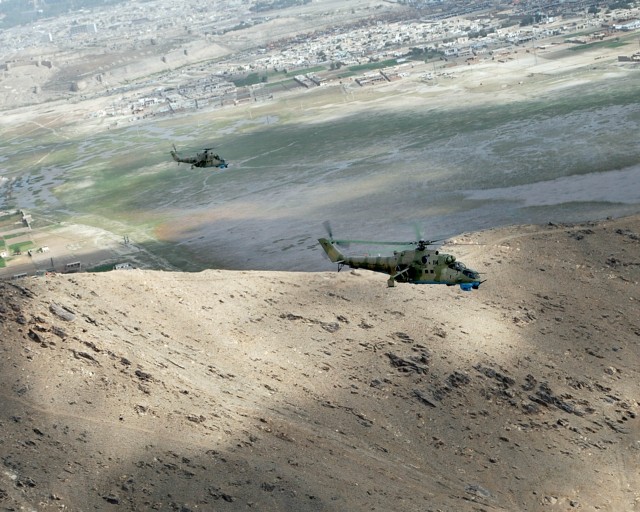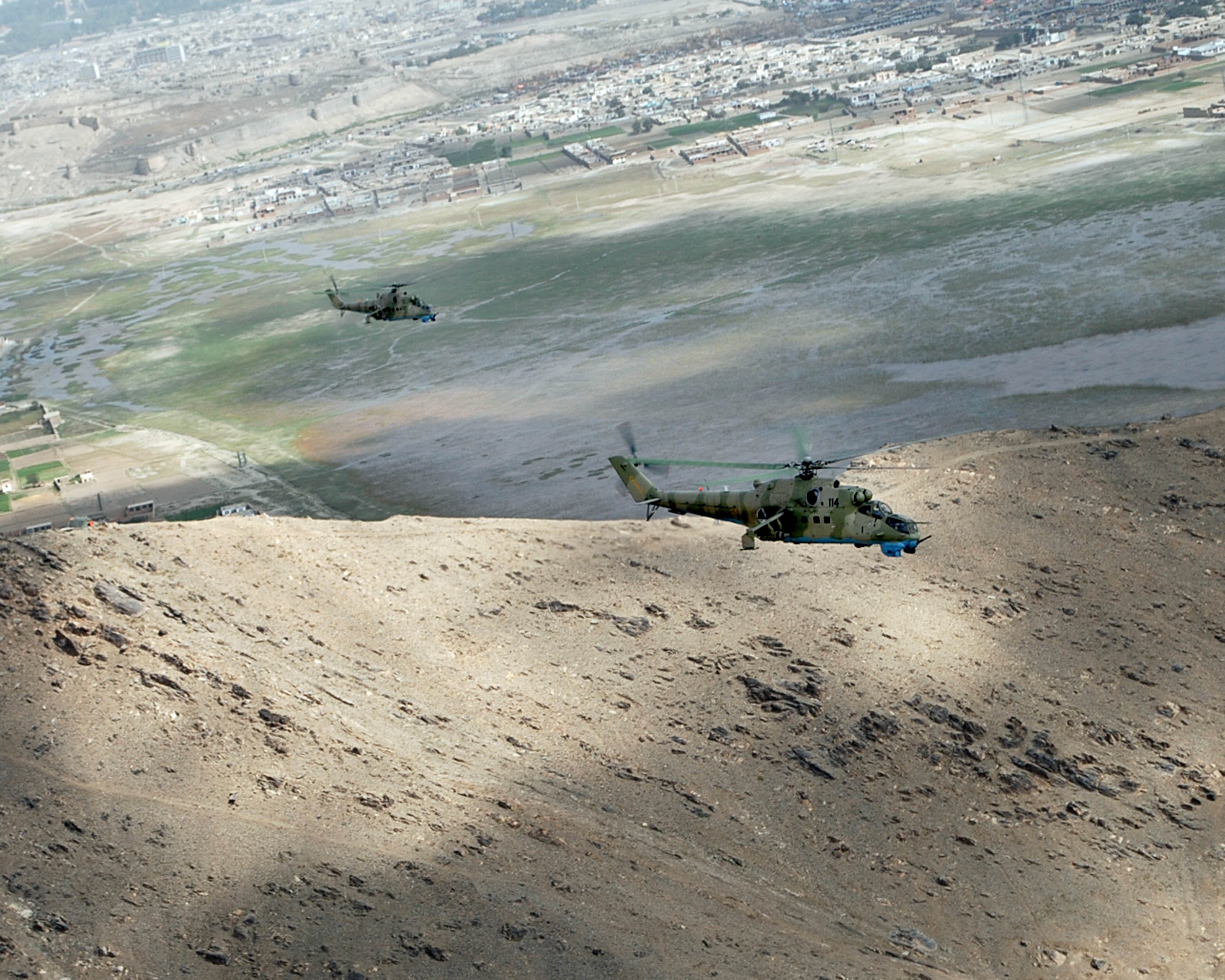BAGRAM AIRFIELD, Afghanistan - Soldiers from the 3rd Combat Aviation Brigade, Task Force Falcon, worked alongside Afghan National Army Air Corps pilots during attack helicopter operations training at Kabul International Airport, Aug. 25.
"What we're introducing to them is pure attack helicopter operations," said Chief Warrant Officer 5 Chris Batt, an Apache pilot and brigade standardization pilot with the 3rd CAB, TF Falcon. "This is actually our second flight together. The first flight, we were observing how each of our aircraft maneuver. This flight, we're showing them our flavor for combat operations."
Task Force Falcon sent Chief Warrant Officer Batt and Chief Warrant Officer Andy Brooks, the maintenance officer for Company B, 1st Battalion, 3rd Aviation Regiment, with Task Force Knighthawk, 3rd CAB, TF Falcon, to KIA in an Apache to train the ANAAC in their Mi-35s, the Afghan aerial attack platform.
The training began that morning with a team brief where 3rd CAB Soldiers trained the ANAAC on how to give a briefing, which includes information on subjects such as the upcoming mission, the weather and the current enemy situation.
"These are things we do on a daily basis; its second nature to us," said Chief Warrant Officer Batt. "For them, their briefings aren't as formal. We're demonstrating our briefings, and hopefully, they'll adopt that."
As Chief Warrant Officer Batt conducted the briefing in English, Maj. Bela Lazar, the commander of the Hungarian Mi-35 Flight Instructor Detachment, translated Chief Warrant Officer Batt's words into Russian for the Afghan pilots, who then discussed the briefed item in Dari. From there, two of the Afghan Mi-35s took to the air with Chief Warrant Officer Batt taking the lead in a U.S. Apache. They practiced lead changes in flight over Kabul and conducted a scenario of an engagement at the Bagram Airfield range.
"We then headed up to Bagram and checked into the East River Range and practiced the close combat attack tactics we discussed in the briefing," said Chief Warrant Officer Batt. "What was gratifying was that after the flight, the Afghan pilot's got together to discuss the tactics we briefed and practiced. The Afghan's have received a smorgasbord of both close combat attack tactics and theories of air-ground-integration. They had Russian instructors and tactics in the old days, and now under the NATO training mission, have Czech, Hungarian and U.S. Air Force instructors, each bringing a unique view to the process and here we are, briefing and demonstrating the Army way of air-ground-integration. Eventually, they'll take a little bit of this and a little of bit that and adopt their own unique way of conducting business. They also enjoyed having an Apache in the flight and I'll tell you, it was thrilling to look over my shoulder and see two Mi-35s in close formation with me."


Social Sharing